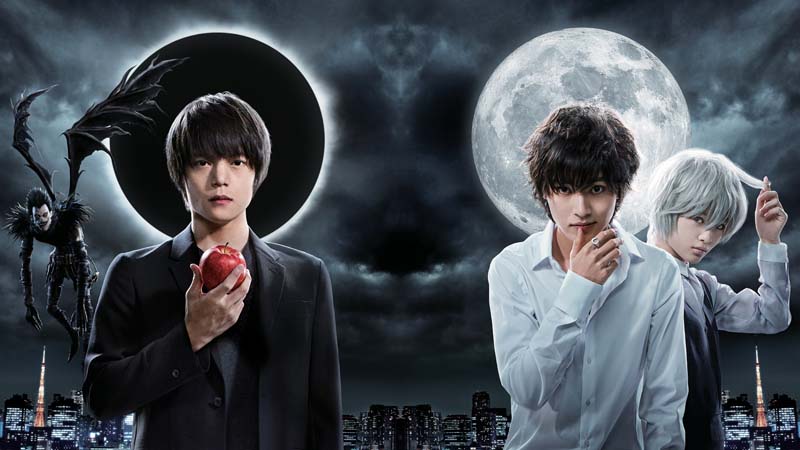
Sony Pictures Television Networks Asia and Japan’s Nippon TV enter the last quarter of the year brandishing a shiny new Gem. Emily Seibel looks at what the two broadcasters are hoping for.
Sony Pictures Television (SPT) Networks celebrated the fifth anniversary of Korean channel One on 1 October. The birthday gift? Another regional Asian entertainment channel, this time led by high-value Japanese content.
A joint venture with Japan’s top broadcaster, Nippon TV, Gem is designed to put Japanese content right back where it used to be in the region years ago, before programmers and buyers started looking at Taiwan and Korea.
Gem launched with eight carriage deals in four markets (including Hong Kong and Indonesia), the result of the JV partners’ high-energy charm campaign launched earlier this year. The romance includes wooing platforms and viewers with exclusive shows such as dramas Death Note and Angel Heart and promising wall-to-wall language-customised access to other top Japanese titles.
The goal is to do for Japanese content what SPT did, with One, for Korean programming in Southeast Asia in 2010 – curate and package country-specific content in a premium environment, driven by linear, for regional audiences.
Digital extensions, including catch-up and everywhere options, and specific digital engagement strategies – including social media – kicked in with the linear roll outs from the beginning of October, says Ang Hui Keng, SPT’s Singapore-based senior vice president and general manager, networks, Asia.
On-demand will be introduced in phase two. “It will come. But we need to get the linear and the linear add-ons to roll out first,” Ang says.
While the schedule is heavily Japanese, Gem will also carry a slate of Asian content acquired from South Korea, mainland China, Hong Kong and Taiwan.
The channel launched on 1 October with Lady & Liar, a Chinese romance drama starring Hong Kong heartthrob Harwick Lau (A Clear Midsummer Night) and China’s Tiffany Tang (Perfect Couple). The series is stripped daily Mondays to Fridays at 8pm.
Flagship Japanese titles include psycho-thriller Death Note, which premiered on Monday, 5 October, and runs Mondays and Tuesdays at 9pm (Hong Kong time); and detective series Angel Heart, which premi...
Sony Pictures Television Networks Asia and Japan’s Nippon TV enter the last quarter of the year brandishing a shiny new Gem. Emily Seibel looks at what the two broadcasters are hoping for.
Sony Pictures Television (SPT) Networks celebrated the fifth anniversary of Korean channel One on 1 October. The birthday gift? Another regional Asian entertainment channel, this time led by high-value Japanese content.
A joint venture with Japan’s top broadcaster, Nippon TV, Gem is designed to put Japanese content right back where it used to be in the region years ago, before programmers and buyers started looking at Taiwan and Korea.
Gem launched with eight carriage deals in four markets (including Hong Kong and Indonesia), the result of the JV partners’ high-energy charm campaign launched earlier this year. The romance includes wooing platforms and viewers with exclusive shows such as dramas Death Note and Angel Heart and promising wall-to-wall language-customised access to other top Japanese titles.
The goal is to do for Japanese content what SPT did, with One, for Korean programming in Southeast Asia in 2010 – curate and package country-specific content in a premium environment, driven by linear, for regional audiences.
Digital extensions, including catch-up and everywhere options, and specific digital engagement strategies – including social media – kicked in with the linear roll outs from the beginning of October, says Ang Hui Keng, SPT’s Singapore-based senior vice president and general manager, networks, Asia.
On-demand will be introduced in phase two. “It will come. But we need to get the linear and the linear add-ons to roll out first,” Ang says.
While the schedule is heavily Japanese, Gem will also carry a slate of Asian content acquired from South Korea, mainland China, Hong Kong and Taiwan.
The channel launched on 1 October with Lady & Liar, a Chinese romance drama starring Hong Kong heartthrob Harwick Lau (A Clear Midsummer Night) and China’s Tiffany Tang (Perfect Couple). The series is stripped daily Mondays to Fridays at 8pm.
Flagship Japanese titles include psycho-thriller Death Note, which premiered on Monday, 5 October, and runs Mondays and Tuesdays at 9pm (Hong Kong time); and detective series Angel Heart, which premiered on 17 October with local-language subtitles within a week of the telecast in Japan. Angel Heart, a live-action spin-off of manga series City Hunter, is the channel’s only express title for the moment, although programmers say short windows on others will follow.
Fast language-customised delivery is, as others who have gone this route will confirm, incredibly difficult. “As is the case with all of our programmes, quality is our utmost priority, so our editing work continues up until the very last moment before broadcast in Japan,” says Nippon Television Network Corporation’s managing director for international business development, Sue Fujimoto. “Then, we prepare the programme for overseas markets, which includes clearing rights. This process takes time and it is extremely challenging to deliver our programmes within a week of airing in Japan,” she adds.
Social media activity is a key component of Gem’s audience engagement strategy. Timothy Oh, SPT Networks Asia’s assistant manager, digital marketing and communications, Asian content, says sharing questions and opinions is being encouraged to fill a gap in the conversation about Japanese content. “There isn’t a dedicated channel to discuss [Japanese content], unlike K-pop, where everybody is talking about it with their extended portals,” he says.
Gem emerges as part of what SPT Networks sees as Japan’s turn to trend across Asia. Ang recalls the progression of international tastes in Asia, starting 30 years back with the surge of popularity of Hong Kong TV drama. “Many people may have forgotten, as Hong Kong drama was at its peak, Japanese content was at its peak too, in Southeast Asia,” he says.
In the years that followed, demand for Taiwanese, Korean and Chinese content came in waves. Japanese content flourished domestically, but in Southeast Asia, it was underserved. There was, “no issue with the audience wanting [it],” Ang says, but the content was, “just not being supplied”.
Why now? For a number of reasons. SPT’s Oh says the channel is part of a broader Japanese craze. “Japanese pop culture has been very big around Asia,” he says, adding, “Big brands are taking off in terms of clothing and food”.
Ang highlights macroeconomic factors in Japan; a slowing domestic economy means media companies may have hit saturation point within the country, he says, adding: “The only way for forward looking media companies is to go out.”
For Nippon Television Network Corporation, Gem is part of a bigger and broader international development strategy launched three years ago. Fujimoto says while Nippon TV has been selling programming internationally for more than 50 years, “we wanted to take our overseas endeavours to new heights”. The international business development unit was established in December 2012.
“In the process of pursuing various opportunities abroad, the idea of establishing a new channel came up. We were fortunate enough to partner with Sony and make GEM a reality,” she says.
Nippon TV will continue to sell its programmes globally, “but we recognise that with this method alone, we only provide our overseas audiences with short-term entertainment. We want our audiences to be able to enjoy our shows any time they want,” Fujimoto says.
The expectation is that Gem will deliver “a constant supply of programmes that Nippon TV is most proud of to viewers throughout Asia, much more than what is possible with our traditional programme sales model. I also hope that through our new channel, Nippon TV becomes a formidable brand that is recognised the world over,” Fujimoto says.
The partnership between SPT and Nippon happened quickly. Ang attributes this to the network’s proven track record of success with Asian content on One, and with the mix of content from the U.S. as well as local productions on AXN. “We managed to work out the joint venture very quickly,” he says.
The Nippon TV joint venture is not connected to Gem Vietnam, which launched in Vietnam in January 2014 with a schedule of Chinese content and a geo-remit that allows it to fast-track roll out within the licensing regulations. Gem Vietnam will continue to be wholly owned by SPT.
Ang says exclusive content is a priority for the regional Gem channel. An example is Nippon TV’s spring/summer flagship series, Death Note, which Nippon held back in Asia in anticipation of Gem’s launch. First and exclusive content on Gem’s schedule includes the second season of Japanese drama, Hanasaki Mai Speaks Out, which was released in Japan on 8 July this year. Gem will also air Japanese variety and game shows first and exclusively in Southeast Asia, including Moco’s Kitchen and Dining Al Fresco.
Original content creation and production for Gem may follow. Ang says “the ambition is there”, but, as for any new channel, distribution is the focus. For now.
This article originally appeared in ContentAsia's print issue published on 20 October 2015.



















